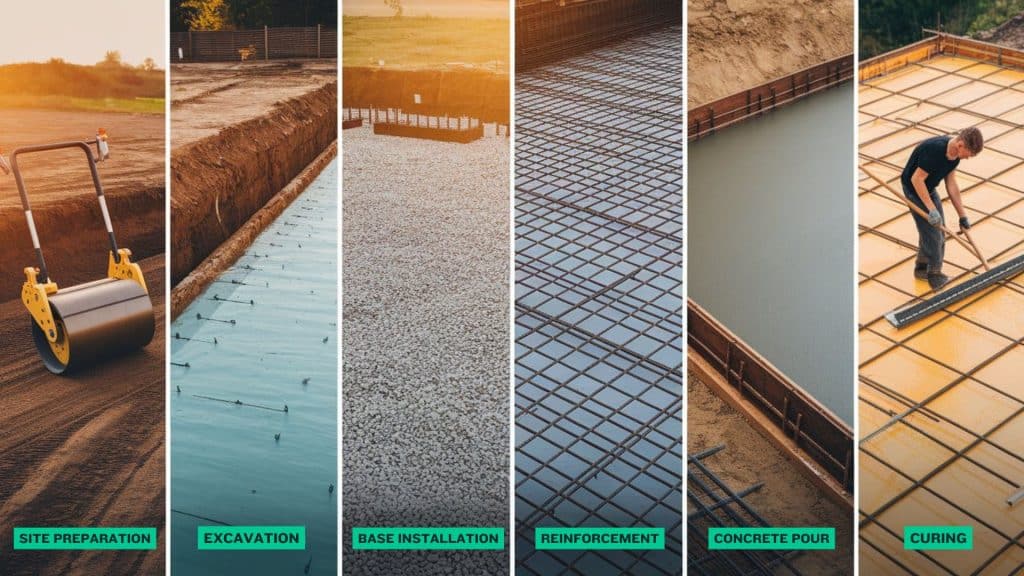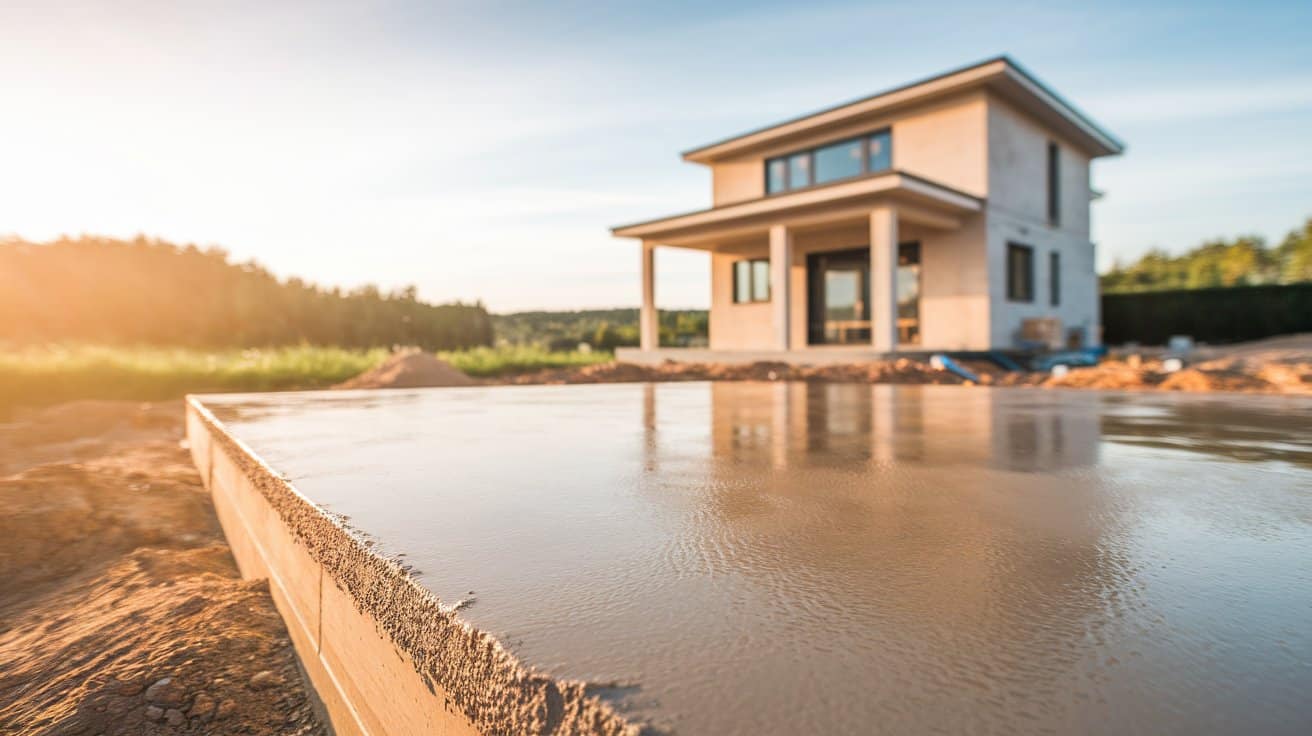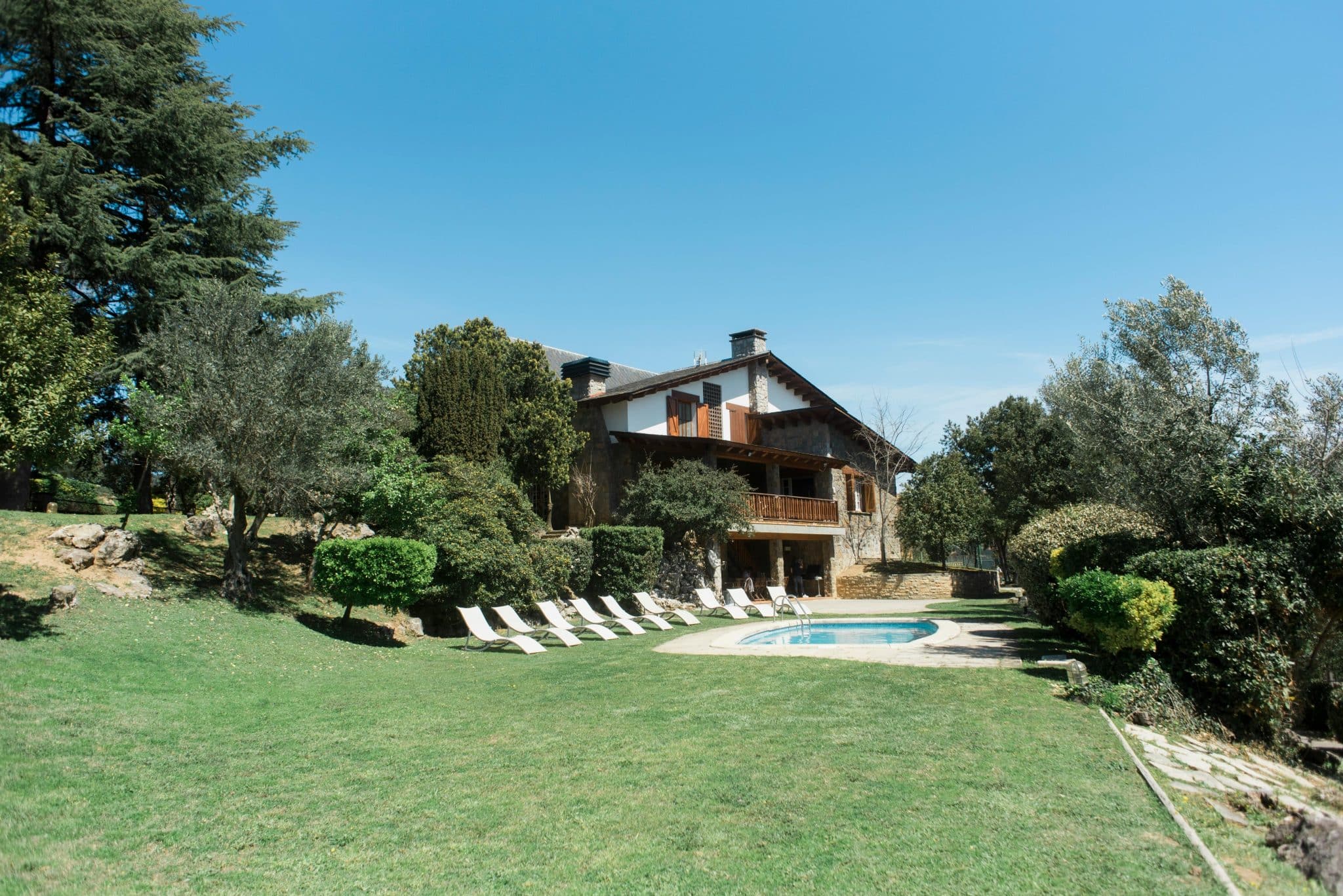Ever wondered why some homes feel solid and stable while others seem to shift and settle over time? The foundation beneath your feet holds the answer to this common mystery.
Most modern homes rely on concrete slabs poured directly on the ground surface. This construction method offers both significant benefits and notable challenges that every homeowner should understand before building or buying.
One of the most common types is the slab-on-grade foundation, which is widely used for its efficiency. It supports the entire weight of your home without requiring deep excavation or a complex framework underneath the structure.
Understanding this foundation type helps you make informed decisions about construction, maintenance, and potential future issues.
Let’s examine what makes these foundations so popular and why people use them for their residential projects.
What are Slab-On-Grade Foundations?
A slab-on-grade foundation is a flat concrete pad poured directly onto prepared ground. This foundation type eliminates the need for basements or crawl spaces beneath your home.
The concrete slab typically measures 4 to 6 inches thick. It sits on a bed of gravel and extends slightly above ground level to prevent water issues.
Types of Slab-on-Grade Foundations:
- Monolithic Slab: The entire foundation pours as one continuous piece. The footing and slab form together in a single pour, creating a unified structure.
- Stem Wall Slab: Features a concrete stem wall around the perimeter. The slab pours separately after the stem wall cures, providing better insulation options.
- Post-Tension Slab: Uses steel cables under tension within the concrete. This method prevents cracking and works well on unstable soils.
- Waffle Slab: Contains a grid pattern of ribs on the bottom. This design reduces concrete usage while maintaining structural strength for larger buildings.
Pros vs Cons of Slab-On-Grade Foundations
Slab-on-grade foundations offer distinct advantages and disadvantages for homeowners. Understanding both sides helps you make informed construction decisions.
These foundations work well in specific climates and soil conditions. However, they may not suit every building situation or homeowner preference.
| Pros | Cons |
|---|---|
| 1. Lower Construction Costs – Requires less excavation and materials than basement foundations. | 1. Limited Storage Space – No basement or crawl space for storage or utilities. |
| 2. Faster Construction Time – Simple process with fewer steps than other foundation types. | 2. Plumbing Access Issues – Pipes run through concrete, making repairs difficult and expensive. |
| 3. Energy Efficient – Eliminates air leaks common in crawl spaces and basements. | 3. Cracking Potential – Ground movement can cause visible cracks in the concrete surface. |
| 4. Pest Resistance – No spaces for rodents or insects to nest beneath the home. | 4. Moisture Problems – Water can seep through concrete, causing humidity and mold issues. |
| 5. Suitable for Warm Climates – Works well where frost lines are shallow or nonexistent. | 5. Poor Insulation – Difficult to insulate properly, leading to cold floors in winter. |
|
6. Reduced Maintenance – No crawl space ventilation or basement waterproofing needed. |
6. Resale Value Impact – Some buyers prefer homes with basements for storage and living space. |
Steps for Building a Slab on Grade Foundation

Building a slab-on-grade foundation requires following specific steps in the right order. Each phase must be completed properly before moving to the next stage.
Step 1: Site Preparation: First, clear all vegetation and remove the topsoil down to stable ground. Grade the area to match your building plans and compact the soil using heavy equipment.
Step 2: Excavation: Next, dig shallow trenches for the slab edges and utility lines. Keep excavation minimal since you’re not creating a deep basement or crawl space.
Step 3: Base Installation: Then, spread a 4 to 6-inch layer of gravel across the entire area. Compact this base thoroughly and install vapor barriers if your local codes require them.
Step 4: Reinforcement Placement: After that, position steel rebar or wire mesh according to your structural plans. Make sure the reinforcement stays properly spaced and supported during the concrete pour.
Step 5: Concrete Pour: Now, have ready-mix trucks deliver concrete directly to your prepared site. Level and smooth the surface immediately using screeds and hand floats.
Step 6: Curing Process: Finally, keep the concrete moist and protected from weather extremes for at least seven days. This slow-curing process helps your slab reach its maximum strength.
When Is a Slab-On-Grade Foundation Ideal?
Slab-on-grade foundations are most effective in specific conditions and climates. Choosing the right foundation type depends on your location, soil conditions, and building requirements.
1. Suitable Climate Conditions
Warm climates with minimal frost penetration make ideal conditions for slab foundations. Areas where ground freezing rarely occurs eliminate concerns about frost heave damage.
Regions with low annual rainfall also benefit from slab construction. Less groundwater reduces the risk of moisture problems and foundation movement.
2. Appropriate Soil Types
Stable, well-draining soils provide the best foundation support. Clay soils that expand and contract with moisture changes can cause cracking problems.
Sandy or gravelly soils with good drainage work well for slab construction. These soil types resist settling and don’t hold excess moisture against the concrete.
3. Cost-Effective Building Situations
Single-story homes gain the most benefit from slab foundations. The reduced structural load makes this foundation type both practical and economical.
Budget-conscious builders often opt for slabs due to their lower material and labor costs. Construction time savings also significantly reduce overall project expenses.
4. Accessibility Requirements
Homes designed for wheelchair access work well with slab foundations. The single-level entry eliminates steps and creates barrier-free living spaces.
Senior-friendly construction also benefits from slab-on-grade design. The absence of stairs reduces fall risks and makes daily movement safer for elderly residents.
Common Problems with Slab-On-Grade Foundations
Slab-on-grade foundations can develop several issues over time that require attention. Understanding these problems helps homeowners identify and address them early.
- Cracking: Temperature changes and ground movement cause visible cracks in the concrete surface. Small hairline cracks are normal, but larger cracks may indicate structural problems.
- Moisture Issues: Water can seep through the pores of concrete, creating humidity problems within the home. Poor drainage around the foundation exacerbates this problem.
- Settling: Inadequate soil preparation leads to uneven foundation settling. This causes doors and windows to stick or gap, and creates visible cracks in walls.
- Plumbing Problems: Pipes embedded in concrete become difficult to access for repairs. Leaks can go undetected and cause expensive damage to the foundation.
- Insulation Challenges: Cold concrete floors increase heating costs during the winter months. Adding insulation after construction is difficult and expensive.
- Radon Exposure: Gas can seep through concrete cracks and enter living spaces. This invisible threat requires proper ventilation and sealing measures.
- Pest Entry: Small cracks provide entry points for insects and rodents. Regular sealing maintenance helps prevent these unwanted visitors.
How to Maintain a Slab-On-Grade Foundation?
Regular maintenance keeps your slab-on-grade foundation in good condition for decades. Simple preventive steps help avoid costly repairs and structural problems.
- Monitor for Cracks: Inspect your foundation every six months for new cracks or changes in existing ones. Mark and measure cracks to track their growth over time.
- Control Moisture: Keep gutters clean and direct water away from the foundation. Install proper drainage around the home’s perimeter to prevent water pooling.
- Seal Cracks Promptly: Fill small cracks with concrete caulk or hydraulic cement. Address larger cracks immediately by consulting a foundation repair specialist.
- Maintain Proper Grading: Ensure soil slopes away from your home on all sides. Add fill dirt when needed to maintain proper water runoff patterns.
- Check Plumbing Regularly: Watch for signs of leaks like wet spots or unusually high water bills. Early detection prevents expensive foundation damage from hidden leaks.
- Control Vegetation: Keep tree roots and large shrubs away from the foundation perimeter. Root growth can cause pressure and cracking in concrete slabs.
Final Thoughts
Slab-on-grade foundations offer a practical solution for many homeowners and builders. Their cost-effectiveness and speed make them attractive options in suitable climates.
Success depends heavily on proper soil preparation and construction techniques. Skipping important steps during installation often leads to expensive problems later.
Regular maintenance helps extend foundation life and prevents major structural issues. Simple inspections and prompt repairs save thousands of dollars in future costs.
Consider your local climate, soil conditions, and long-term needs before choosing this foundation type. What works in one location may not suit another area’s requirements.
What are your thoughts on slab-on-grade foundations? Share your experiences and questions in the comments below – we’d love to hear from you!
Frequently Asked Questions
What Is the Life Expectancy of A Slab on Grade?
Slab foundations typically last 80 to 100 years or more with proper construction and regular maintenance care.
Why Not Buy a House on A Slab?
Slab homes lack basement storage space and make utility line access difficult for repairs and maintenance.
Why Do People Not Like Slab Houses?
Cracking issues from temperature changes, soil movement, tree roots, and natural disasters create ongoing maintenance concerns.








